Mamluk Sultan Altamash (Iltutmish) built the Minarah, which till date is the tallest rubble masonry minaret on earth. Then why do we call it the Qutub Minar?
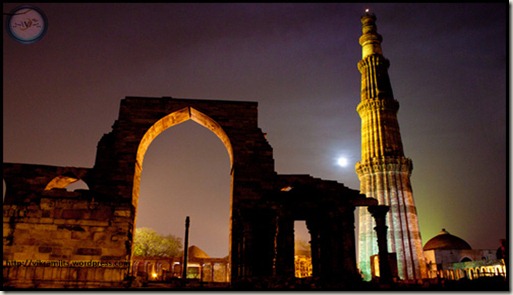
The Qutb Minar (also spelled as Qutub Minar or Kutb Minar) is world’s tallest rubble masonry minaret and a world heritage site in Delhi. It is situated within the Qutb Complex, which has been the centre of the first city of Delhi since the first Muslim ruler stepped here. Before Muhammad-bin-Sam (Muhammad Ghori) defeated Prithvi Raj Chauhan, this land was with Tomar Rajpoots & Chauhans (Arkpal Tomar gave it to his grandson Prithvi). Chauhan extended the walls of Lal Kot to create Qila Rai Pithora. Ghori left his governor Qutb-ud-din Aibak to rule India after defeating Prithvi Raj Chauhan in 1060 A.D. and thus the slave dynasty started in India. There is a huge minar in the heart of this city, which most people attribute to this first Islamic ruler of north India – Qutb-ud-Din Aibak. But is this true? This article unfolds a story, least discussed in History.
The Qutb Complex

The Qutb Complex was originally a site with 27 Hindu and Jain Temples. These temples were destroyed by the Islamic invaders to obtain stone and raw material for their mosques and other buildings. These temples existed much before Ghori was even born.
As the rulers from slave dynasty planned their buildings, they were short of raw material. By demolishing the majestic temples, they served another very important purpose. To ensure stronghold, it was important that the backbone of religion prevailing in conquered land is crushed. Destroying temples meant that the new Islamic Invaders had no respect for the religion being practiced by locals. They were in such hurry of completing the job, that they were not able to deface the statues properly. Even today, the remains of temples can be seen within the Qutb Complex.
The First Jama Masjid
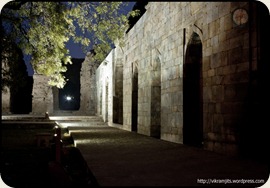 For those who don’t know, ‘Jama Masjid’ (or Jami Masjid or Jumma Masjid or Masjid-e-Jami) is the majestic Friday Mosque built for the Muslim population of the city. Inscriptions on the Qutb Minar suggested that Qutb-ud-Din Aibak built this Mosque as the first building after stepping on Indian Land. This was the oldest mosque of North India. There are few mosques built in Tamil Nadu and Kerala before this. Qutb-ud-din Aibak was ruling over Delhi from 1206 to 1210 AD. There is a confusion over the actual name of this mosque. These days, we call it Quwwat-ul-Islam (Might of Islam) but the old books suggest that its name was Qubbat-e-Islam. R.N.Munshi even writes it as ‘Qutb-ul-Islam’. Further, Munshi quotes the translation of the inscription written on the walls of Mosque (done by Thomas in his book – Pathan Kings):
For those who don’t know, ‘Jama Masjid’ (or Jami Masjid or Jumma Masjid or Masjid-e-Jami) is the majestic Friday Mosque built for the Muslim population of the city. Inscriptions on the Qutb Minar suggested that Qutb-ud-Din Aibak built this Mosque as the first building after stepping on Indian Land. This was the oldest mosque of North India. There are few mosques built in Tamil Nadu and Kerala before this. Qutb-ud-din Aibak was ruling over Delhi from 1206 to 1210 AD. There is a confusion over the actual name of this mosque. These days, we call it Quwwat-ul-Islam (Might of Islam) but the old books suggest that its name was Qubbat-e-Islam. R.N.Munshi even writes it as ‘Qutb-ul-Islam’. Further, Munshi quotes the translation of the inscription written on the walls of Mosque (done by Thomas in his book – Pathan Kings):
Kutb-ud-Din Aibak, on whom be the mercy of God, constructed this mosque.
This fortress was conquered and this Masjid Jami was built during the months of the year 587 by the great and mighty commander-in-chief Kutb-ul-Dawlat-wa-ul-Din, the commander of commanders, Aibeg Sultan. May God exalt his helpers. Materials from 27 idol temples, each of which cost twice thousand into thousand Diliwals, have been used in this Masjid. May Almighty God send mercy on him, who prays for the rest of the builder.
Quote Ref: The History of the Kutb Minar (Delhi) by R. N. Munshi (1911)
Later this mosque was extended by Alaudin Khilji and a college (Madrasa) was added to it. When Khilji died, he was buried in the same mosque and his tomb, though not decorated with glorifying marble and inscriptions, was built in same complex.
Origin of Qutb Minar
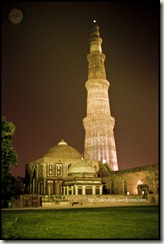 According to the popular belief, the Qutb Minar (or Qutub Minar) was built by the first Islamic ruler of North India, Qutubud-din Aibak. However, I have found numerous proofs that he neither had funds, nor time (in his tiny 4 year regime), to build, or even commence such a majestic structure. It appears to me that associating it with Sultan Qutb-ud-din Aibak was a “historian’s mistake”. If you read historians & travellers, who came to India during the Sultanate period, you will find that they honour this Minar as ‘Sultan Altamash’s Minar’. Hasan Nizami dedicated his work Taj-ul-Maasir (the crown of exploits) to sultan Aibak but also mentioned major events from the period of his predecessor and successor. There is no reference to any such Minar in this important piece of work, which talks about period after 7 years of death of Aibak. If Qutubuddin Aibak even dreamed about (if not commissioned) this minar, then we must have found atleast some mention in this book. But Hasan Nizami do talk about the Jami Masjid of Delhi built by Aibak in following manner:
According to the popular belief, the Qutb Minar (or Qutub Minar) was built by the first Islamic ruler of North India, Qutubud-din Aibak. However, I have found numerous proofs that he neither had funds, nor time (in his tiny 4 year regime), to build, or even commence such a majestic structure. It appears to me that associating it with Sultan Qutb-ud-din Aibak was a “historian’s mistake”. If you read historians & travellers, who came to India during the Sultanate period, you will find that they honour this Minar as ‘Sultan Altamash’s Minar’. Hasan Nizami dedicated his work Taj-ul-Maasir (the crown of exploits) to sultan Aibak but also mentioned major events from the period of his predecessor and successor. There is no reference to any such Minar in this important piece of work, which talks about period after 7 years of death of Aibak. If Qutubuddin Aibak even dreamed about (if not commissioned) this minar, then we must have found atleast some mention in this book. But Hasan Nizami do talk about the Jami Masjid of Delhi built by Aibak in following manner:
Kutb-ud-Din built the Jami Masjid at Delhi, and adorned it with the stones and gold obtained from the temples which had been demolished by elephants, and covered it with inscriptions in Yoghra, containing the divine commands.”
Following are the other prominent travel historians of related period
- Ibn Asir (with his work Kamil-ut-Tawarikh aka Tarikh-i-Kamil)
- Ata Malik Juwaini aka Alau-ud-din Juwaini (with his work Tarikh-i-Jahan-Kusha)
- Maulana Nuruddin Muhammed ‘Ufi, who lived in Delhi during Altamash’s period (with his work Jami-ul-Hikayat wa Liwami-ul-Riwayat)
- Minhaj-i-Siraj (with his work Tabkat-i-Nasiri)
The above authors make no mention of Minar. If it was one of the biggest construction of era, these people, who were living in Delhi and writing particularly on Qutb-ud-Din Aibak must have mentioned about it.
Fatuhat-i-Feroz Shahi, written by Sultan Feroz Shah Tughlaq himself has a mention of Qutb Minar. It says:
“The minara of Sultan Muizz-ud-din Sam had been struck by lightning. I repaired it and raised it higher than it was before”
It should be noted that Feroz Shah Tughlaq also repaired other monuments and mention correct names like Hauz-i-Shamsi, Hauz-i-Alai, Madrasa of Altamash, Rukn-ud-din’s Tomb, Sultan Jalal-ud-Din’s Tomb and so on. Tarikh-i-Firozshahi written by Shams-i-Siraj Afif however refer to this Minar as “the large pillar at old Delhi” raised by Sultan Shams-ud-Din Altamash. Ibn Batuta was not sure who built this minar so all he wrote about the builder was “Is it the minar of Feroz Shah”. Babur in his memoirs mention about this minar as the Minar of Sultan Alauddin Khilji. This shows that even till late 16th century, this minar was not attributed to Qutb-ud-Din Aibak. It was known by the names of Altamash, Khilji or Tughlaq, who we know built and repaired portions of minar.
Translation on the entrance gate of Qutb minar:
The prophet on whom be the mercy and peace of God, has declared “whoever erects a temple to the true God (on earth,) shall receive six such ‘dwellings in Paradise’. The Minar, the building of the king of kings, Shems-ud-Dunya-wa-ud-Din, now in peace and pardon, be his tomb protected, and his place be assigned in heaven ____ was injured by lightning in the reign of the exalted monarch Secander the son of Behlol : (may his power and empire last for ever and his reign be glorious); and therefore the slave Fatteh-Khan, the son of Mesned-Ali the liberal of the liberal, and the meritorious servant of the king _____________, repaired it according to command. The 13th of Rebi-ul-Akher in the year 909.
<FROM DOOR ON FIRST BALCONY>
The Sultan Shams-ul-Hak-wa-ud-Din Altamash ____ erected this building
<FROM FOURTH STORY>
“The erection of this building was commanded in the glorious time of the great Sultan, the mighty king of kings, the master of mankind, the lord of the monarchs of Turkistan, Arabia and Persia; the Sun of the World and Religion, of the Faith and the Faithful, the lord of safety and protection, the heir of the kingdom of Sulman Abul Muzeffer Altamash, Nasir-Amin-ul-Momenin”
– Translation by Mr. Walter Ewer in Asiatic Researces vol. XIV (Cal: 1822)
We can see from the above proofs that this Minar was always known as the Minar of Altamash and not of Qutub-ud-Din Aibak.
Minarets of Jam, Ghazni and Konye
Reputed historian Sir Syed Ahmed in his work Athar-us-Sanadid said that this Minar was actually built by Prothvi Raj Chauhan so that his daughter can have a view of Jamuna river. But if it is true, then its design and architecture must be unique and not match with the other Minars of Islamic countries.
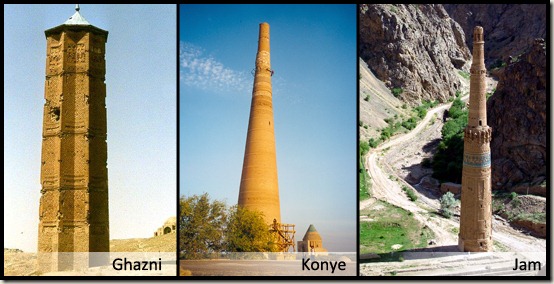
Minaret of Ghazni: Built by Muizuddin Bahram in 10th century in the city of Ghazni. It is little different from the Qutb Minar but has many similarities, like built by same generation of rulers and it is also the minaret of a mosque.
Minaret of Gutluk Temir in Konye-Urgench: This is the third tallest rubble masonry minaret in world built in Old Urgench city of Turkmenistan in 11th century.
Minaret of Jam: This Minaret, very much similar to the architecture of Qutub Minar is situated in Shahrak District of Ghor Province of Afghanistan. It is right next to the Hari River. This 65 metre high minaret was completed in 12th century. This place (called Firuzkoh) was the summer capital of Ghorid Dynasty (from where Qutbuddin Aibak came). This is the second tallest rubble masonry minaret of world and was probably attached to a mosque, just like Qutb Minar.
Qutbuddin Or Qutbuddin
Some historians went to an extend claiming that Altamash dedicated this Minaret to Khwaja Qutbuddin Bakhtiyar Kaki (r.a.), whose shrine is right behind this complex. Khwaja Kaki (ra) is the immediate successor of Hz. Khwaja Mouinuddin Chisti (ra) of Ajmer. This could be true because we know how much Altamash respected Hazrat Kaki (ref: work by Maulana Minhaj Siraj). A friend of mine, Khalid bin Umar told me a story:
Khwaja Qutub-ud-din Bakhtiyar Kaki (1173-1235 AD) is one of the most respected and esteemed Buzurg in India. He lived during the reign of Altamash ( Eltutmish) and died in Delhi. When Khawaja Qutub-ud-Din Bakhtiyar Kaki’s janazah was ready for the last salat. The khadim-i-khas came forward and announced that according to the will of Khawaja Sahib the funeral prayer (salat-ul-janazah) is to be led by the person who fulfills these 3 requirements:
- He should have never committed adultery after reaching puberty.
- He should have never missed the 4 rakat of sunnah(ghair-muakkidah) before Asr salat.
- He should have never missed Takbir-i-Ula’ ( Opening Takbir in Salat) in prayer ( Jamat)
The huge crowd stood still !
Hundreas of Awliya , Shyukh of Delhi as well as Shaykh’s senior disciples were present there. No one came forward.Khadim repeatedly announced the requirements. But there was no response. A sense of impatience was being felt.
Finally, Sultan Shamusddin Altamash (May Allah have mercy on him) stepped forward. He remarked, “No one knew my secret, the respected Khawaja disclosed it. All praise is to Allah, I fullfil these criteria”. He then led the prayers.
I have serious doubts on the fact that Qutb Minar was named after Hazrat Khwaja because if it really was, Altamash must have engraved atleast some information in this regard on the tower. He had all the time in world to write almost everything on this minaret and even the kings that followed him wrote a lot on it. But no one ever mentioned anything about Hazrat Kaki, ever. However, Ritter in the Journal of the Asiatic Society of Bengal (Vol XX, Nos. I to VIII, 1851, p353), wrote that this Minar could be in honour of Qutub Sahib, the celebrated saint. This statement is further corroborated by Major Raverty in his translation of Tabakat-i-Nasiri where he calls this Minar as ‘Lath of Kutb Sahib’. Several other historians like Miss Mabel Duff (aka Mrs. W. R. Rickemers) and even Sir Alexander Cunningham (Dir. Gen. of ASI – 1862) support this statement. But they all put forward their assumptions and no one gives an assurance of confirmed fact to prove it. The only logical reason was given by R.N. Munshi, who says that since Hazrat Kaki was such a celebrated saint, it is possible that the emperors never thought of putting an extra line on the Minaret and it was assumed by everyone as the ‘Laat of Qutub Sahib’
[Edited – 16 October 2015]
Link with 27 Nakshatras
Many people claim that since there were 27 temples and Qutub Minar has 27 edges on base, this could be a Hindu observatory to study the Constellation movement as Hindus believe in 27 Nakshatras. Well, before paying attention to any such rumour, I would request readers to ponder upon following points:
- There were 27 temples. They were a mix of Jain and Hindu Temples. This makes it impossible to form a pattern for observatory
- These temples were built in different eras, some even decades apart. There is no proper documentation for each.
- Temples were not in a single complex. They were spread across the length and breadth of this first city. Some were even outside the walls of Lal Kot and Rai Pithora. We still have Jain Dada Badi and few other remains
- A portion of Temple is still intact in the Quwwat-ul-Islam Mosque. One should see its placement and design, before reaching the final conclusion.
- The base has 27 conical edges and 27 circular ones. This makes it 54 at base.
Qutub Minar has a long and mysterious history. People like me will never be able to unfold it completely. However, I have tried my best to put forward the facts that I learned in past few years.
———-
Vikramjit Singh Rooprai
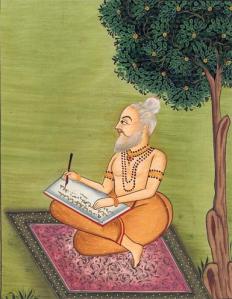
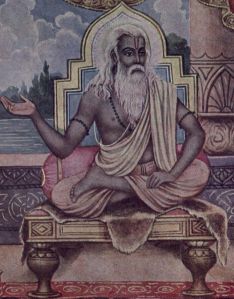
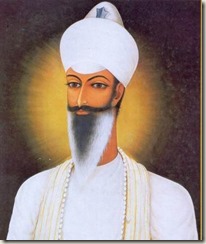



 Time passed and rulers came and went, ruling over the entire breadth of Hindostan, which stretched from present day Afghanistan to eastern ends of Bangladesh. In 16th century, as Emperor Babur came to India, he hired Farid Khan (aka Sher Khan) an Afghan born in Sasram (Bihar), who later dethroned Babur’s son Humayun and took over the throne of Delhi, and became Emperor of Hindostan. This general, popularly known as Sher Shah Suri decided to restore this ancient path and make it more useful. He deployed enormous labour to revive the Uttarpath and connected his hometown Sasaram to Agra. He died soon after that, the Mughals that came afterwards connected Kabul (Afghanistan) with Chittagong (Bangladesh) using this road. Today, this road connects the capitals of 4 countries and covers a total distance of 2500 kilometres (1600 miles). During this time, this road was known by many names, eg: Shah Rah-e-Azam (“Great Road”) or Sadak-e-Azam or Badshahi Sadak.
Time passed and rulers came and went, ruling over the entire breadth of Hindostan, which stretched from present day Afghanistan to eastern ends of Bangladesh. In 16th century, as Emperor Babur came to India, he hired Farid Khan (aka Sher Khan) an Afghan born in Sasram (Bihar), who later dethroned Babur’s son Humayun and took over the throne of Delhi, and became Emperor of Hindostan. This general, popularly known as Sher Shah Suri decided to restore this ancient path and make it more useful. He deployed enormous labour to revive the Uttarpath and connected his hometown Sasaram to Agra. He died soon after that, the Mughals that came afterwards connected Kabul (Afghanistan) with Chittagong (Bangladesh) using this road. Today, this road connects the capitals of 4 countries and covers a total distance of 2500 kilometres (1600 miles). During this time, this road was known by many names, eg: Shah Rah-e-Azam (“Great Road”) or Sadak-e-Azam or Badshahi Sadak.


![clip_image002[7] clip_image002[7]](https://vikramjits.files.wordpress.com/2013/05/clip_image0027_thumb.jpg?w=185&h=211)
![clip_image006[4] clip_image006[4]](https://vikramjits.files.wordpress.com/2013/05/clip_image0064_thumb.jpg?w=212&h=107)
![clip_image008[4] clip_image008[4]](https://vikramjits.files.wordpress.com/2013/05/clip_image0084_thumb.jpg?w=214&h=108)
![clip_image010[4] clip_image010[4]](https://vikramjits.files.wordpress.com/2013/05/clip_image0104_thumb.jpg?w=186&h=96)





